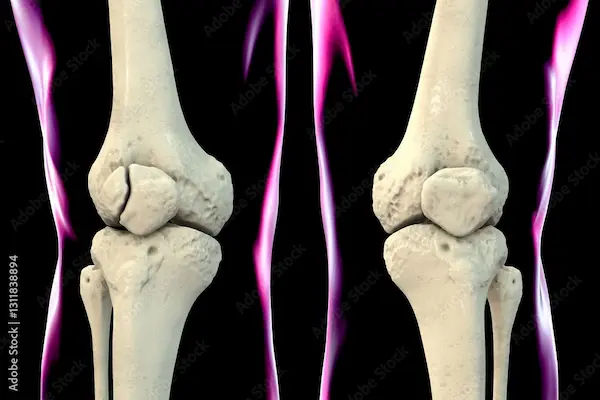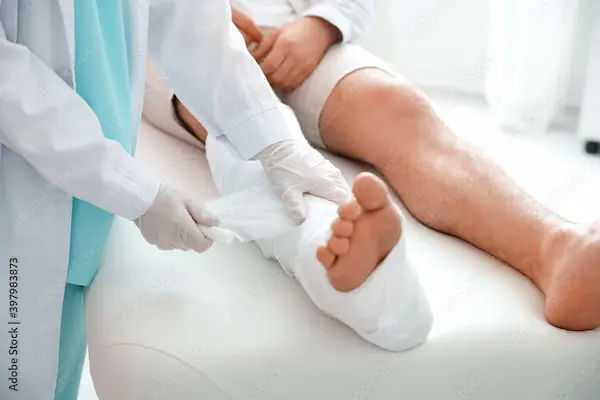Do All Fractures Require Surgery? A Clear Guide
Learn whether all fractures need surgery, what factors influence the decision, and explore surgical vs. non-surgical fracture treatments for optimal recovery.

Written by Dr. Siri Nallapu
Reviewed by Dr. D Bhanu Prakash MBBS, AFIH, Advanced certificate in critical care medicine, Fellowship in critical care medicine
Last updated on 12th Sep, 2025

Introduction
The unmistakable crack, the immediate surge of pain, the inability to move a limb, breaking a bone is a frightening experience. In the midst of the panic and trip to the emergency room, one pressing question dominates your thoughts: "Will I need surgery?" The common assumption is that a broken bone automatically means an operation, but that's far from the truth. The reality of fracture treatment is nuanced, tailored to the individual and the specific nature of their injury. This guide will demystify the process, exploring the critical factors orthopaedic specialists consider when deciding between surgical and non-surgical interventions. Understanding the types of fractures, the goals of treatment, and what influences this crucial decision can empower you to have informed conversations with your doctor about your path to recovery.
What is a Fracture? Understanding the Basics
A fracture is simply the medical term for a broken bone. It occurs when a force exerted against a bone is stronger than the bone itself can withstand. This disrupts the bone's structure and continuity. While we often picture a bone snapping cleanly in two, the reality is far more varied. Fractures can be tiny hairline cracks or breaks that shatter the bone into multiple pieces.
Common Types of Fractures
Orthopaedic doctors classify fractures into several categories, which is the first step in determining treatment. Key types include:
- Closed vs. Open Fracture: A closed fracture means the skin is intact over the break. An open (or compound) fracture is where the broken bone punctures the skin, creating a risk of infection and almost always requiring surgery.
- Displaced vs. Non-Displaced Fracture: In a non-displaced fracture, the bone cracks but maintains its proper alignment. A displaced fracture means the broken pieces have moved out of their normal position, which often requires realignment.
- Comminuted Fracture: The bone is shattered into three or more pieces. This complex break typically necessitates surgical intervention.
- Greenstick Fracture: The bone bends and cracks but doesn't break completely, much like trying to snap a green twig. This is common in children whose bones are more flexible.
- Stress Fracture: A small, hairline crack often caused by repetitive force or overuse, common in athletes.
Key Factors Determining the Need for Surgery
The decision to operate is not taken lightly. It's a complex calculation based on achieving the best possible functional outcome. Here are the primary factors surgeons evaluate:
1. Fracture Displacement and Alignment
This is often the most critical factor. If the broken ends of the bone are significantly misaligned (displaced), a doctor must perform a closed reduction (manipulating the bone back into place without an incision) or an open reduction (surgery to realign the bone). The goal is to restore the bone to its normal anatomical position to ensure it heals correctly and doesn't lead to long-term deformity or joint problems.
Consult an Orthopaedic doctor for the best advice
2. The Location of the Break
A stable, non-displaced fracture in the shaft of a long bone might heal perfectly with a cast. However, a break that extends into a joint (an intra-articular fracture) almost always requires surgery to reconstruct the joint surface perfectly. Even a millimetre of misalignment in a joint can lead to accelerated arthritis and pain. Similarly, fractures in bones that are difficult to immobilise, like certain jaw or pelvic fractures, often need surgical stabilisation.
3. Open vs. Closed Fracture
As mentioned, an open fracture is a surgical emergency. The open wound provides a pathway for bacteria to reach the broken bone, leading to a high risk of a deep bone infection (osteomyelitis). Surgery is required to thoroughly clean the wound and stabilise the fracture.
4. Patient Age and Overall Health
A child's incredible healing capacity and potential for bone remodelling mean that many paediatric fractures can be treated non-surgically, even with some displacement. Conversely, an elderly patient with osteoporosis might require surgery for a hip fracture to allow them to get out of bed quickly and avoid life-threatening complications like pneumonia or blood clots. Underlying health conditions like diabetes or vascular disease can also impair healing and influence the treatment plan.
Non-Surgical Fracture Treatment Options
For many stable, non-displaced, or minor fractures, non-surgical fracture treatment is highly effective. The primary principle is immobilisation to allow the bone to heal naturally.
Casting and Splinting
A cast is a rigid shell, typically made of fibreglass or plaster, that encases the injured limb to hold the bone fragments in place. A splint is often used initially for swelling and provides less rigid support. Casting is the gold standard for many common fractures in arms and legs.
Closed Reduction
For some displaced fractures, a doctor can manually manipulate the bone pieces back into their correct alignment without making a surgical incision. This procedure, done under anaesthesia, is followed by application of a cast to hold the reduction in place.
Common Surgical Procedures for Fractures
When surgery is deemed necessary, the goal is to anatomically realign the bone fragments and stabilise them so healing can proceed.
Internal Fixation: Plates, Screws, and Rods
This is the most common type of orthopaedic surgery for fractures. The surgeon makes an incision to access the broken bone, repositions the fragments (open reduction), and then secures them with specialised implants. These can include:
- Metal plates and screws that hold together fragments on the bone's surface.
- Rods (intramedullary nails) inserted down the centre of long bones like the femur or tibia.
- This hardware provides strong, stable fixation, often allowing for early movement and weight-bearing.
External Fixation
In cases of severe trauma, significant soft tissue damage, or complex pelvic fractures, an external fixator may be used. This involves placing metal pins or screws into the bone above and below the fracture, which are then connected to an external frame outside the skin. This stabilises the fracture without placing hardware directly at the injury site, which can be beneficial if there's a high risk of infection.
The Recovery Roadmap: What to Expect
Healing Timelines for Different Fractures
Broken bone recovery time varies widely. A simple finger fracture might heal in 3-4 weeks, while a major weight-bearing bone like the femur can take 3-6 months or longer. Healing is also slower in smokers and those with certain medical conditions.
The Critical Role of Physical Therapy
Whether treated surgically or not, physical therapy after broken bone is crucial. Immobilisation leads to muscle weakness, stiffness, and loss of range of motion. A physical therapist designs a personalised programme to restore strength, flexibility, and function, guiding you safely back to your daily activities.
Potential Risks and Complications
Both surgical and non-surgical treatments carry risks. Non-surgical care risks include malunion (healing in a poor position), nonunion (failure of the bone to heal), and joint stiffness. Surgical risks include infection, blood clots, nerve or blood vessel damage, and hardware irritation. Your surgeon will discuss these in detail based on your specific case.
Conclusion
The journey from a traumatic break to full recovery is unique for every individual and every fracture. The answer to "Do all fractures require surgery?" is a definitive no. A significant number of breaks are effectively managed with non-surgical methods like casting, which allow the body's remarkable natural healing processes to work. However, for complex, displaced, or open fractures, surgery is a powerful and often necessary tool to restore alignment, provide stability, and pave the way for optimal function. The decision is multifaceted, relying on the type and location of your fracture, your overall health, and your lifestyle goals. If you suspect you have a fracture, your first and most important step is to seek immediate professional medical evaluation. An accurate diagnosis from an orthopaedic specialist is the only way to determine the right path forward for your healing and long-term well-being. For a convenient consultation, you can connect with an experienced orthopaedic surgeon online through Apollo24|7 to discuss your symptoms and next steps.
Consult an Orthopaedic doctor for the best advice
Consult an Orthopaedic doctor for the best advice

Dr Vikas P Birla
Orthopedics-Sports Medicine
13 Years • MBBS, DNB, MNAMS, Fellowship in Shoulder and Sports Injury
Delhi
Apollo Hospitals Indraprastha, Delhi
Dr. Pavan Kumar Guntaka
Orthopaedician
12 Years • MBBS,MS
Hyderabad
Apollo Medical Centre Kondapur, Hyderabad

Dr. Keshav Digga
Orthopaedician
14 Years • MBBS, MS Orthopaedics, FIASM, FIMISS
Kolkata
DIGGA HEALTHCARE, Kolkata

Dr. Prakhar Mishra
Orthopaedician
5 Years • MBBS, D.Ortho, Fellowship in Robotic knee replacement(Indo-Japan), Computer-assisted joint replacement, Arthroscopy and Sports medicine (Indo-Japan).
Bengaluru
WellnessVibes Multispeciality Clinic, Bengaluru

Dr. Akshay Shetty T
Orthopaedician
9 Years • MBBS, MS (Orthopaedics)
Bengaluru
WellnessVibes Multispeciality Clinic, Bengaluru
Consult an Orthopaedic doctor for the best advice

Dr Vikas P Birla
Orthopedics-Sports Medicine
13 Years • MBBS, DNB, MNAMS, Fellowship in Shoulder and Sports Injury
Delhi
Apollo Hospitals Indraprastha, Delhi
Dr. Pavan Kumar Guntaka
Orthopaedician
12 Years • MBBS,MS
Hyderabad
Apollo Medical Centre Kondapur, Hyderabad

Dr. Keshav Digga
Orthopaedician
14 Years • MBBS, MS Orthopaedics, FIASM, FIMISS
Kolkata
DIGGA HEALTHCARE, Kolkata

Dr. Prakhar Mishra
Orthopaedician
5 Years • MBBS, D.Ortho, Fellowship in Robotic knee replacement(Indo-Japan), Computer-assisted joint replacement, Arthroscopy and Sports medicine (Indo-Japan).
Bengaluru
WellnessVibes Multispeciality Clinic, Bengaluru

Dr. Akshay Shetty T
Orthopaedician
9 Years • MBBS, MS (Orthopaedics)
Bengaluru
WellnessVibes Multispeciality Clinic, Bengaluru
More articles from Bone Fracture
Frequently Asked Questions
How can you tell if a fracture needs surgery?
You cannot definitively tell without an X-ray and a doctor's evaluation. However, signs that strongly suggest a need for surgery include a visible deformity of the limb, an open wound where the bone is visible, inability to move the joint or bear any weight, and severe instability at the fracture site.
Can a displaced fracture heal without surgery?
It is possible in some cases, especially in children, if a successful closed reduction can be performed to realign the bones manually before casting. However, if the bones cannot be realigned or held in place adequately with a cast, surgery will be necessary to achieve proper healing and avoid long-term functional issues.
What is the most common non-surgical fracture treatment?
The most common and effective non-surgical treatment is casting and immobilisation. A fibreglass or plaster cast holds the broken bone ends in place, providing the stability needed for the body's natural healing processes to bridge the gap and mend the break over several weeks.
What happens if you don't get surgery for a fracture that needs it?
Choosing not to have recommended surgery can lead to several complications, including malunion (the bone healing in a crooked or misaligned position), nonunion (the bone failing to heal at all), chronic pain, loss of joint function, arthritis in adjacent joints, and permanent deformity or disability.
How long does it take to recover from a broken bone?
Recovery time for a broken bone varies dramatically. Simple fractures may heal in 6-8 weeks. More complex fractures, especially in weight-bearing bones, can take 3-6 months to heal fully, and regaining full strength and motion through physical therapy may take even longer.

.webp)

